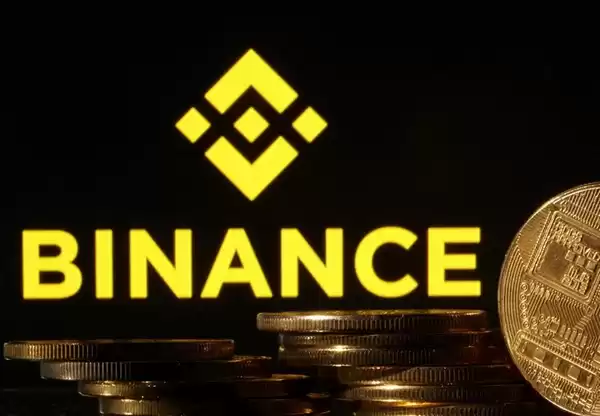-
 bitcoin
bitcoin $123963.239194 USD
1.37% -
 ethereum
ethereum $4529.082464 USD
1.07% -
 xrp
xrp $2.983640 USD
0.71% -
 tether
tether $1.000287 USD
0.02% -
 bnb
bnb $1179.874393 USD
2.99% -
 solana
solana $230.633678 USD
1.55% -
 usd-coin
usd-coin $0.999835 USD
0.03% -
 dogecoin
dogecoin $0.254240 USD
1.34% -
 tron
tron $0.341176 USD
0.15% -
 cardano
cardano $0.842285 USD
0.52% -
 hyperliquid
hyperliquid $48.537896 USD
-0.86% -
 chainlink
chainlink $21.863092 USD
-0.84% -
 ethena-usde
ethena-usde $0.999743 USD
-0.07% -
 sui
sui $3.579561 USD
-0.18% -
 stellar
stellar $0.403418 USD
2.67%
How to calculate Binance contract income
To calculate contract income on Binance, determine the contract value, establish the position (long or short), calculate realized profit/loss, incorporate leverage, account for funding fees, and consider taxes.
Nov 08, 2024 at 02:56 am

Binance, the leading cryptocurrency exchange, offers a comprehensive suite of trading products, including futures contracts. Contract trading allows users to speculate on the future price of cryptocurrencies, potentially generating significant returns. However, it is crucial to understand how to calculate contract income to maximize profits and minimize risks.
Steps to Calculate Binance Contract Income:1. Understand Contract Basics:- Futures Contracts: Obligations to buy or sell an asset at a predetermined price on a future date.
- Spot Price: Current market price of the underlying asset.
- Contract Size: Number of units of the underlying asset represented by each contract.
- Leverage: Ratio of funds borrowed to own funds used for trading, amplifying potential profits and losses.
- Multiply the spot price by the contract size.
- For example, if Bitcoin is trading at $20,000 and the contract size is 1 BTC, the contract value is $20,000.
- Long Position: Buying a contract with the expectation that the price will rise.
- Short Position: Selling a contract with the expectation that the price will fall.
- Long Position: Subtract the initial contract price from the closing contract price.
- Short Position: Subtract the closing contract price from the initial contract price.
- If the realized profit/loss is positive, it represents a gain; if negative, it represents a loss.
- Multiply the realized profit/loss by the leverage factor used.
- Leverage amplifies the potential profit/loss, increasing both gains and losses.
- Futures contracts incur funding rates, which are periodic payments made to maintain leveraged positions.
- Calculate the funding fees based on the interest rate and contract duration.
- Factor these fees into the overall contract income calculation.
- Contract income is subject to taxes in most jurisdictions.
- The specific tax treatment depends on the user's location and individual circumstances.
- Consult a tax professional for guidance on tax-related implications.
- Long Position:
- Spot price: $20,000
- Contract size: 1 BTC
- Leverage: 10x
- Initial contract price: $20,000
- Closing contract price: $22,000
- Realized profit: $2,000
- Profit after leverage: $20,000
- Short Position:
- Spot price: $22,000
- Contract size: 1 BTC
- Leverage: 10x
- Initial contract price: $22,000
- Closing contract price: $20,000
- Realized profit: $2,000
- Profit after leverage: $20,000
In this example, both the long and short positions result in a profit of $2,000 before leverage. However, due to the use of 10x leverage, the actual profit after leverage is $20
Disclaimer:info@kdj.com
The information provided is not trading advice. kdj.com does not assume any responsibility for any investments made based on the information provided in this article. Cryptocurrencies are highly volatile and it is highly recommended that you invest with caution after thorough research!
If you believe that the content used on this website infringes your copyright, please contact us immediately (info@kdj.com) and we will delete it promptly.
- BlockDAG, DOGE, HYPE Sponsorship: Crypto Trends Shaping 2025
- 2025-10-01 00:25:13
- Deutsche Börse and Circle: A StableCoin Adoption Powerhouse in Europe
- 2025-10-01 00:25:13
- BlockDAG's Presale Buzz: Is It the Crypto to Watch in October 2025?
- 2025-10-01 00:30:13
- Bitcoin, Crypto, and IQ: When Genius Meets Digital Gold?
- 2025-10-01 00:30:13
- Stablecoins, American Innovation, and Wallet Tokens: The Next Frontier
- 2025-10-01 00:35:12
- NBU, Coins, and Crypto in Ukraine: A New Yorker's Take
- 2025-10-01 00:45:14
Related knowledge

What is the difference between futures and perpetual contracts for Bitcoin?
Oct 02,2025 at 11:54pm
Understanding Bitcoin Futures Contracts1. Bitcoin futures are derivative instruments that allow traders to speculate on the future price of Bitcoin at...

What is the best time to trade PEPE contracts?
Oct 03,2025 at 11:54am
Understanding PEPE Contract Volatility1. PEPE contracts exhibit extreme price fluctuations due to their meme-based nature and low market cap. Trading ...

What are the common mistakes to avoid with Bitcoincoin contracts?
Oct 03,2025 at 08:54am
Emerging Trends in the Cryptocurrency Market1. Decentralized finance (DeFi) platforms continue to expand their influence across the blockchain ecosyst...

What is the maintenance margin for Bitcoin contracts?
Oct 02,2025 at 01:36am
Decentralized Exchanges Gain Momentum in 20241. Decentralized exchanges (DEXs) have seen a significant rise in trading volume, surpassing centralized ...

How to use technical analysis for trading XRP contracts?
Oct 03,2025 at 01:18pm
Understanding Price Patterns in XRP Futures1. Identifying chart patterns such as triangles, head and shoulders, and double tops or bottoms can provide...

What does "longing" PEPE contracts mean?
Oct 03,2025 at 11:54pm
Understanding Decentralized Exchanges in the Crypto Ecosystem1. Decentralized exchanges (DEXs) operate without a central authority, allowing users to ...

What is the difference between futures and perpetual contracts for Bitcoin?
Oct 02,2025 at 11:54pm
Understanding Bitcoin Futures Contracts1. Bitcoin futures are derivative instruments that allow traders to speculate on the future price of Bitcoin at...

What is the best time to trade PEPE contracts?
Oct 03,2025 at 11:54am
Understanding PEPE Contract Volatility1. PEPE contracts exhibit extreme price fluctuations due to their meme-based nature and low market cap. Trading ...

What are the common mistakes to avoid with Bitcoincoin contracts?
Oct 03,2025 at 08:54am
Emerging Trends in the Cryptocurrency Market1. Decentralized finance (DeFi) platforms continue to expand their influence across the blockchain ecosyst...

What is the maintenance margin for Bitcoin contracts?
Oct 02,2025 at 01:36am
Decentralized Exchanges Gain Momentum in 20241. Decentralized exchanges (DEXs) have seen a significant rise in trading volume, surpassing centralized ...

How to use technical analysis for trading XRP contracts?
Oct 03,2025 at 01:18pm
Understanding Price Patterns in XRP Futures1. Identifying chart patterns such as triangles, head and shoulders, and double tops or bottoms can provide...

What does "longing" PEPE contracts mean?
Oct 03,2025 at 11:54pm
Understanding Decentralized Exchanges in the Crypto Ecosystem1. Decentralized exchanges (DEXs) operate without a central authority, allowing users to ...
See all articles










































































